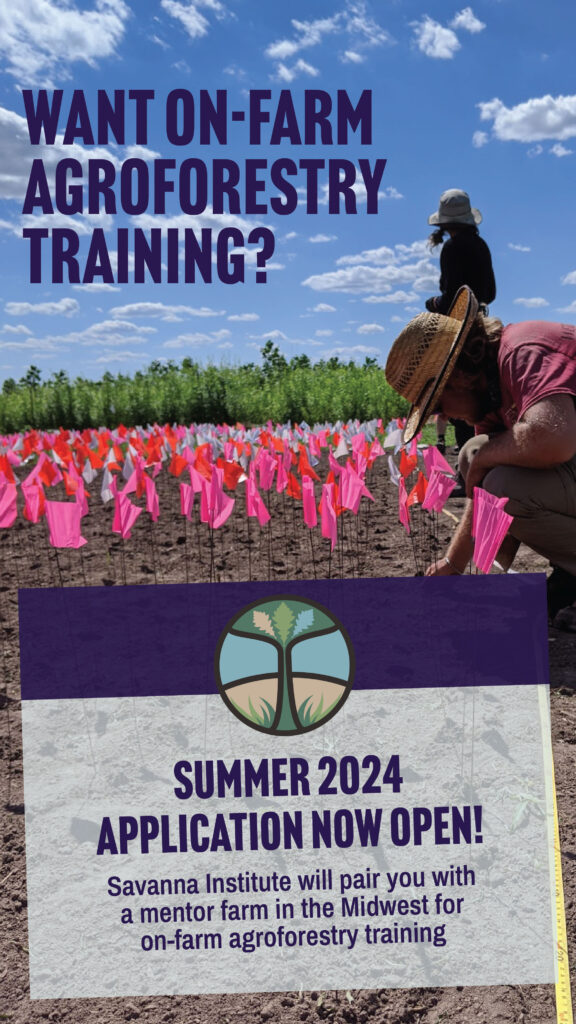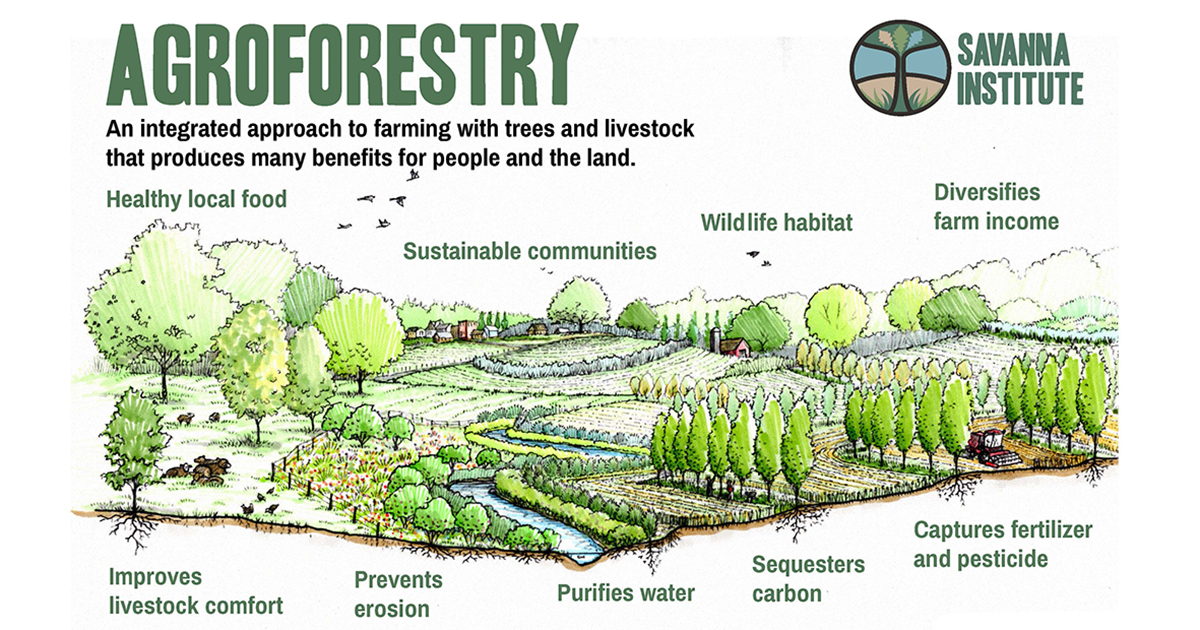
🔊Agriculture as a Climate Solution: Just Add Trees
Click here to learn more about Climate Fast Forward on October 17th, 2022. The first 25 people who register for Climate Fast Forward using the code: Savanna2022 will receive $20 off their ticket!
In the latest episode of Perennial AF, Savanna Institute’s Executive Director, Keefe Keeley, and Wisconsin Community Agroforester, Barbara Decré, present agroforestry as a natural climate solution in a webinar for the Wisconsin Academy of Sciences, Arts, and Letters, recorded in March 2022. The transcript below has been edited for brevity and clarity.
Q: What is “agroforestry”?
Keefe: I think of it as trees, on farms, on purpose.
We want to get to a point where we don’t even call it “agroforestry” anymore – we just call it farming. There was a time when soybeans were a new crop, when dairy was new in Wisconsin, when cranberries were a new crop. And there’s no reason that can’t be true for more crops.
Once we start to think about and work with trees on our agricultural landscapes, we start thinking not just in 3D, with the added dimension of trees, but in the fourth dimension of time, thinking deep into the past and further into the future. Agroforestry gives us opportunities to think beyond the generation we’re in now.
Q: What are the most common reasons people want to do agroforestry?
Barbara: There are some recurring themes with our farmers. One of the most important ones is a new vision for our agricultural system associated with a new Green Revolution. We talk about working with nature rather than against it, and talk about how perennial polycultures can be more productive than annual monocultures, and with fewer inputs, as well as how it can attract and retain new generations of farmers.
Our society has long relied on a narrative of farmers as heroes. Climate change presents an opportunity to reframe that issue and equip farmers as climate heroes. We’re not trying to convince anyone to practice agroforestry. Instead we work with farmers who already want to do something different, and talk about how agroforestry can help them achieve their goals. Even if climate mitigation may not be their goal, planting trees can have that impact.
Q: What motivates you to do this work?
Keefe: We’re in dangerous, dangerous territory. And it’s worth appreciating that. It really is an emergency state that we’re in, and we need to treat it that way. If it’s not clear from the data, I think we all have direct experience now of how climate is impacting our lives.
My hometown is in the Kickapoo Valley. The Kickapoo River has flooded periodically for time immemorial, but the frequency and intensity of those floods has become ferocious and life threatening. In a recent flood several years ago, my mother was actually swept away in floodwaters, driving her car in a place where there had never been floodwaters before. She was nearly swept away and spent two or three hours in her car until she could be rescued by first responders. That’s really made it personal for me, just seeing how threatening this climate catastrophe is.
Q: And where does agroforestry fit into climate mitigation?
Keefe: To mitigate climate change, we need to stop putting carbon from fossil fuels into the atmosphere. That’s solution number one – we can’t take our eye off of that. But that’s not enough. We have way too much carbon in the atmosphere right now. We need to take carbon out. There are emerging technologies to do that mechanically and chemically, but those don’t work right now, so while we continue to do that research, what we have to get carbon out of the atmosphere is photosynthesis. In other words, by growing plants.
More from Perennial AF
🔊 A Thorny Topic: Black Locust and Honey Locust for Agroforestry
A lot of people hate black locust and honey locust trees, but some people think they hold great potential for agroforestry. Greg Judy, Austin Unruh, Steve Gabriel, Brett Chedzoy, Eliza Greenman, and others share their perspective in this episode.
🔊 “Spreadsheets on the Radio” – Farm Viability and the Fruit & Nut Compass with John Hendrickson
Spreadsheet wizard John Hendrickson helps host Jacob Grace get started with the Fruit and Nut Compass, a free spreadsheet tool for producers to track the financial viability of their enterprises.
🔊 Getting Started with Forest Farming – Ingrid Daudert, Karam Sheban, and Robin Suggs
This episode features portions of the PFG 2023 panel discussion “Everything You Wanted to Know About Forest Farming (But Didn’t Know to Ask)”, featuring Ingrid Daudert from Misty Dawn Farm in Wisconsin, Karam Sheban from the Northeast Forest Farmers Coalition, and Robin Suggs from Appalachian Sustainable Development.


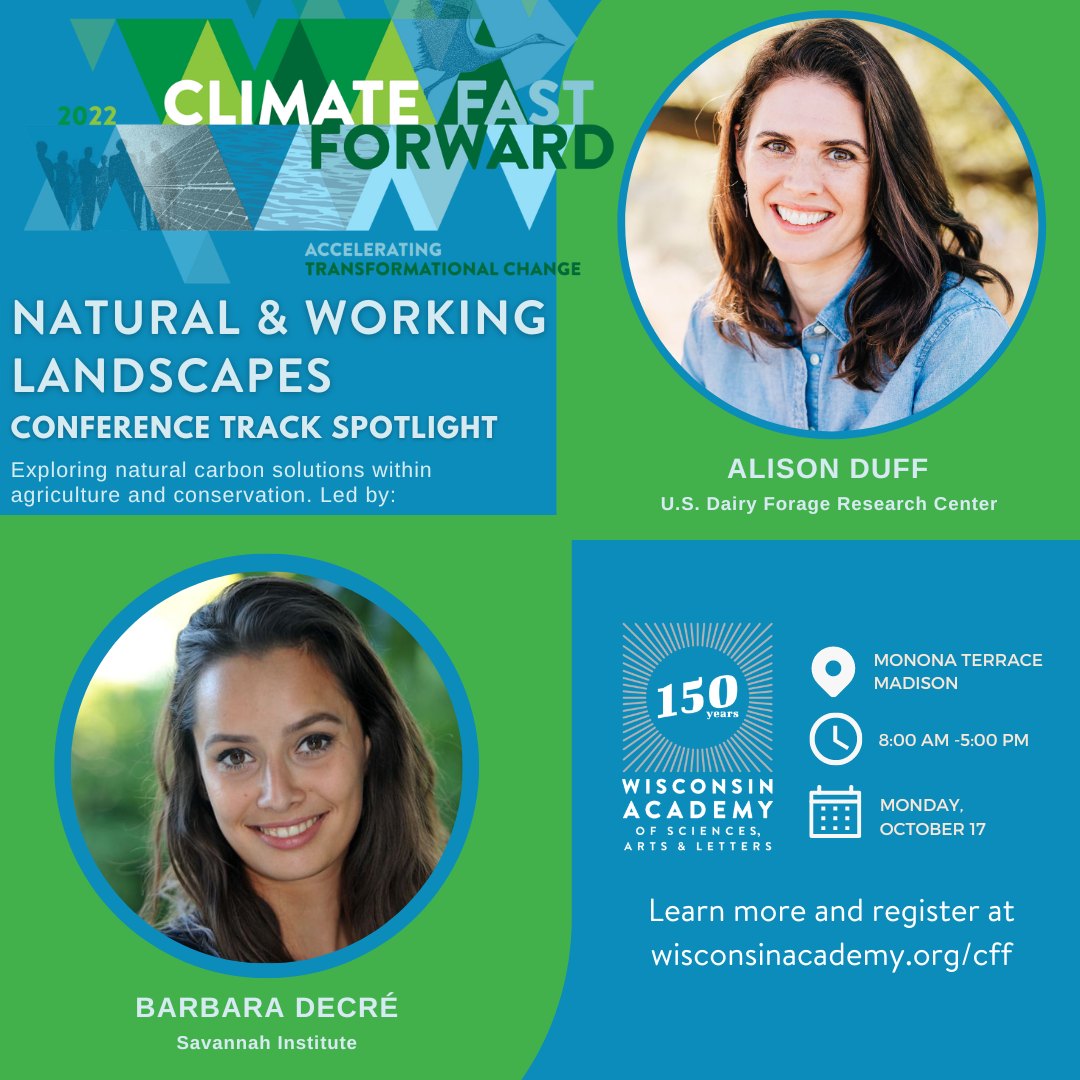
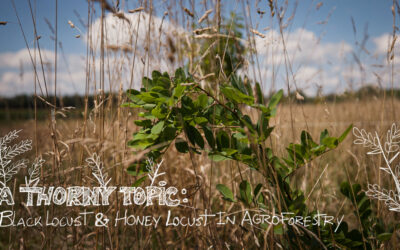
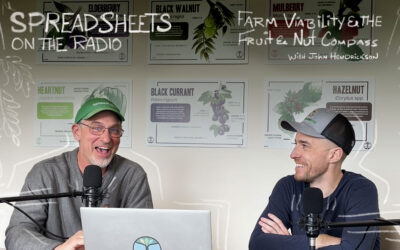
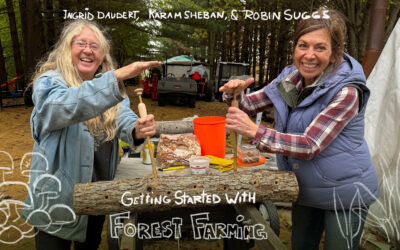
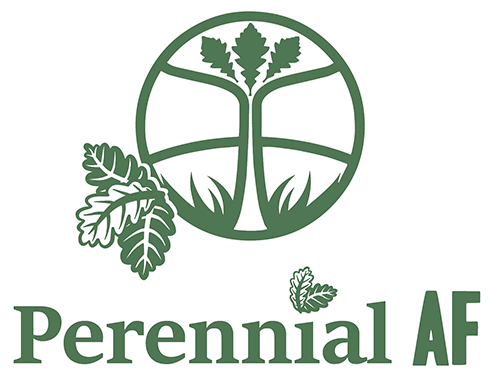


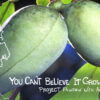 🔊 “You Can’t Believe It Grows Here” – Project Pawpaw with Adam D’Angelo
🔊 “You Can’t Believe It Grows Here” – Project Pawpaw with Adam D’Angelo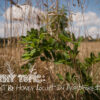 🔊 A Thorny Topic: Black Locust and Honey Locust for Agroforestry
🔊 A Thorny Topic: Black Locust and Honey Locust for Agroforestry 🔊 “Spreadsheets on the Radio” – Farm Viability and the Fruit & Nut Compass with John Hendrickson
🔊 “Spreadsheets on the Radio” – Farm Viability and the Fruit & Nut Compass with John Hendrickson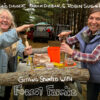 🔊 Getting Started with Forest Farming – Ingrid Daudert, Karam Sheban, and Robin Suggs
🔊 Getting Started with Forest Farming – Ingrid Daudert, Karam Sheban, and Robin Suggs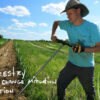 🔊 Agroforestry for Climate Change Mitigation and Adaptation – with Nate Lawrence and Monika Shea
🔊 Agroforestry for Climate Change Mitigation and Adaptation – with Nate Lawrence and Monika Shea